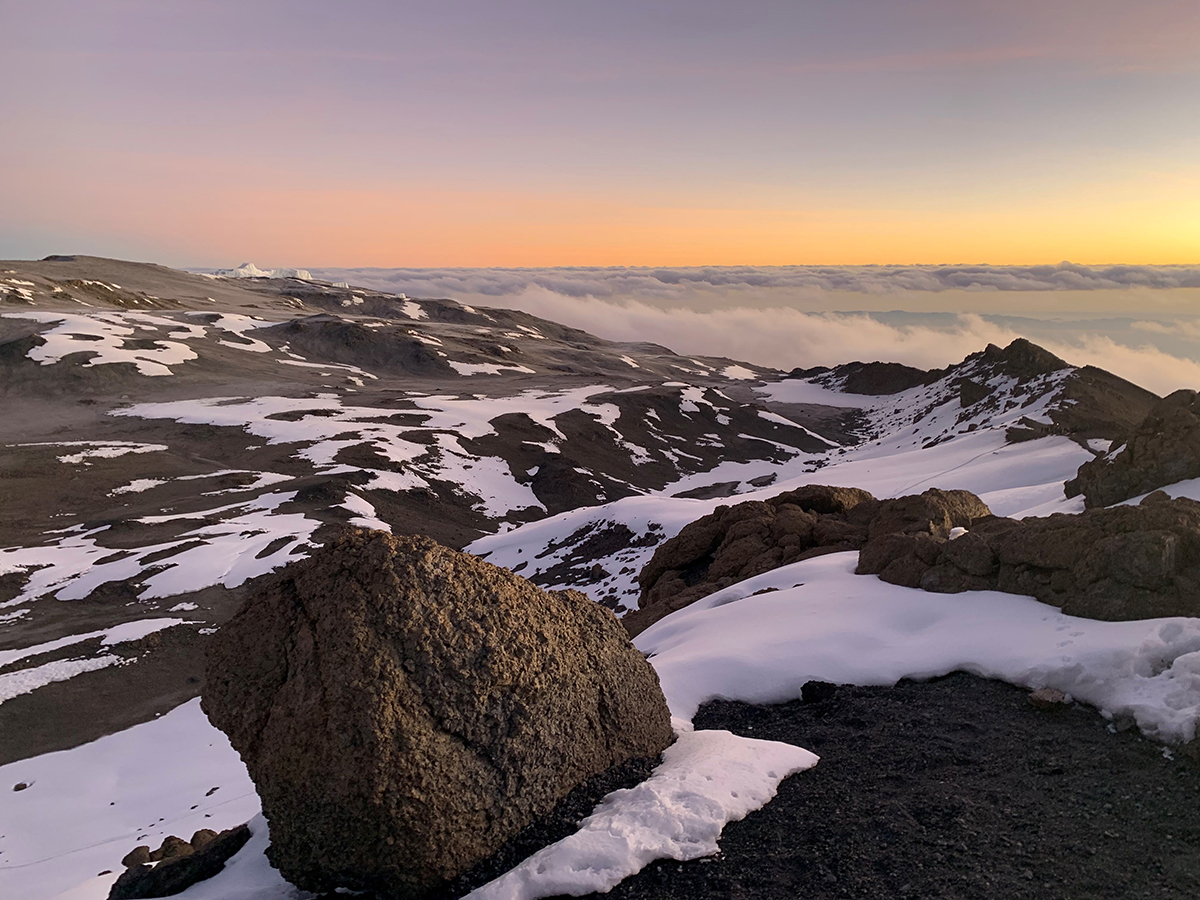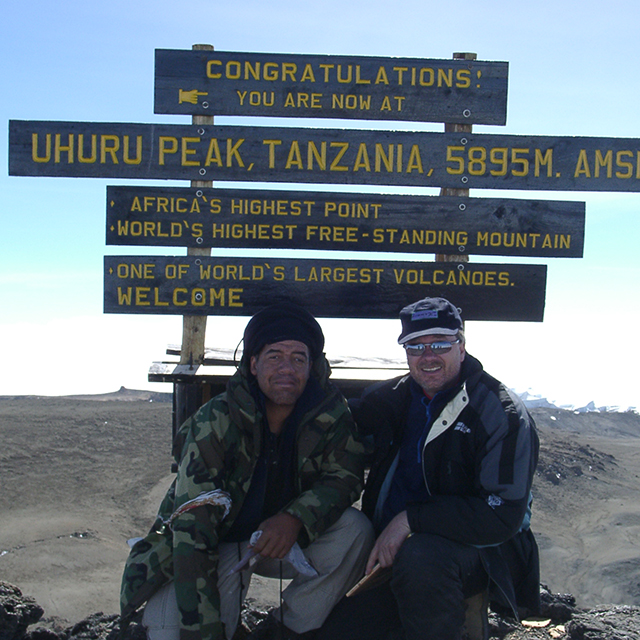 In 2010, G. Byron Brooks, M’97, trekked to the Everest base camp, just above the Tibetan plane at an altitude of 16,900', following a 14-day journey through Lhasa. He also hiked the Matterhorn (14,692') in the Alps and La Malinche (14,636'), a volcano in Mexico.
In 2010, G. Byron Brooks, M’97, trekked to the Everest base camp, just above the Tibetan plane at an altitude of 16,900', following a 14-day journey through Lhasa. He also hiked the Matterhorn (14,692') in the Alps and La Malinche (14,636'), a volcano in Mexico.
Now retired from the telemedicine field, in 1999, Brooks summited Kilimanjaro (19,341') via the Umbwe Route — one of the most challenging approaches, a short, steep and direct climb. (He's pictured, left, with long-time friend and colleague Mike Gorton, J.D.)
Brooks says, "One of my most memorable adventures was a winter camping trip with my wife near Coldfoot.” That’s one of the few Alaskan communities north of the Arctic Circle accessible by road. Population: 34.
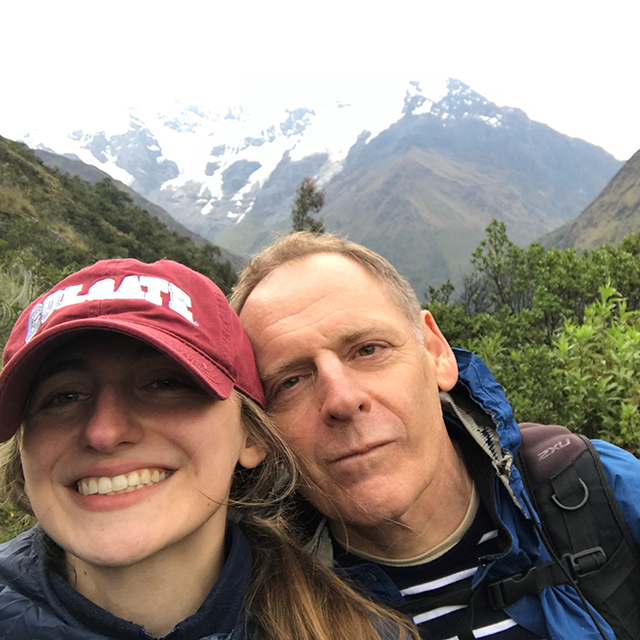 Carlo Contoreggi, M'82, climbed Kilimanjaro (19,341') in September 2017 over nine days.
Carlo Contoreggi, M'82, climbed Kilimanjaro (19,341') in September 2017 over nine days.
“These endeavors give you a new perspective on the world and on yourself,” says the director of nuclear and molecular imaging and therapeutics at Mercy Medical Center in Baltimore.
“Accomplishing something completely different from the academic pursuits of our day-to-day lives gives mastery that can expand your vision of self. It's about confronting challenges and being able to achieve a difficult task, really no matter what it entails.”
Pictured are Contoreggi and his daughter, a current medical student in the Class of 2023, Natalina Contoreggi, on a hike in Peru to Machu Picchu.
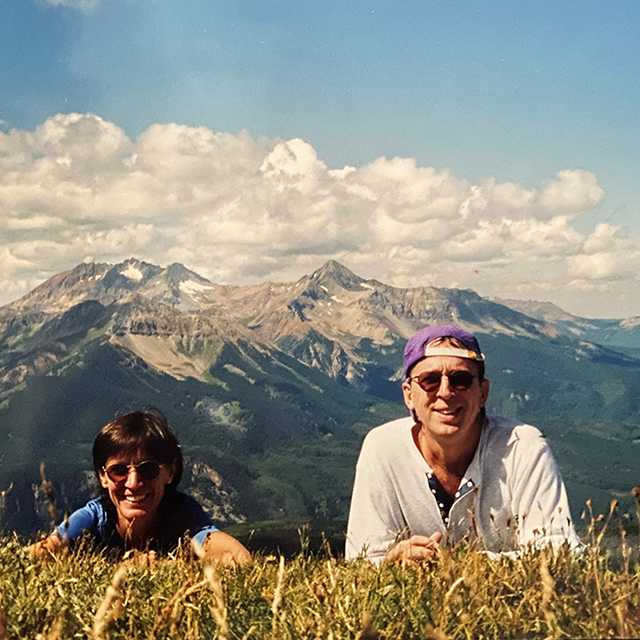 A. Randolph Garnett Jr., M'79, H'82, F'85, climbed Wilson Peak (14,016') in Colorado’s San Juan Mountains in the early ‘80s. Pictured are Garnett and his wife Connie on nearby Gold Hill (12,711') in 2006 with Wilson Peak in the background.
A. Randolph Garnett Jr., M'79, H'82, F'85, climbed Wilson Peak (14,016') in Colorado’s San Juan Mountains in the early ‘80s. Pictured are Garnett and his wife Connie on nearby Gold Hill (12,711') in 2006 with Wilson Peak in the background.
A former member of the Wilderness Medical Society, Garnett once helped evacuate a man with a bad concussion out of Idaho’s Salmon River. “The guide and I paddled the last 20-plus miles of the river after 9 p.m. to get him to the local hospital,” says the retired pulmonologist.
“Because I had paddled the James River for many years while at MCV, I was able to navigate some challenging rapids in the middle of a full moonlit night while monitoring the gentleman. I’ll never forget it.”
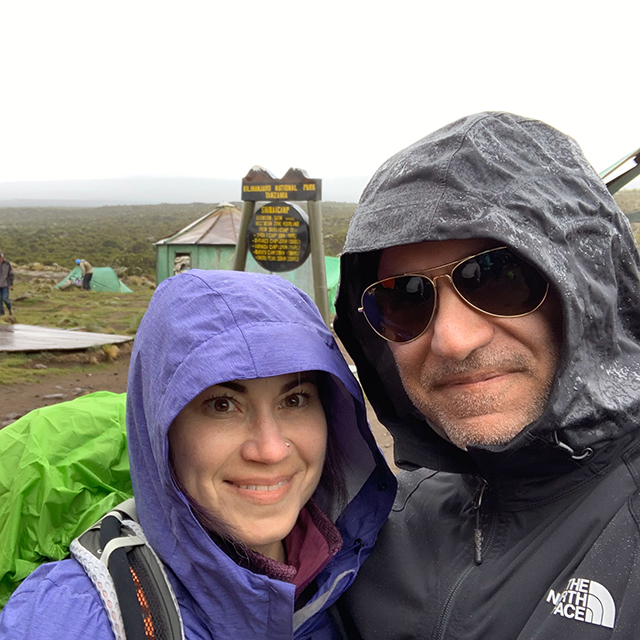 Matt Saady, MS'95 (PHIS), M’99, H’04, F’05, trekked to the Kanchenjunga base camp in India (16,873') in 2012 and climbed Kilimanjaro (19,341') in January 2019 with his wife Katalina.
Matt Saady, MS'95 (PHIS), M’99, H’04, F’05, trekked to the Kanchenjunga base camp in India (16,873') in 2012 and climbed Kilimanjaro (19,341') in January 2019 with his wife Katalina.
“I’m surrounded by so much technology all day—on a chair in a dark room,” says the Boca Raton, Florida, radiologist. “These hikes are a great way to get away, to be in nature, to escape technology.”
To get to Kilimanjaro’s summit at sunrise, the hike begins around 10 p.m. and lasts all night. Saady remembers hail, wind and trying to get through three layers of pants to use the bathroom in the pitch black. But it was worth the effort. "Because the mountain is so big, there are different climates and views each day of the hike."
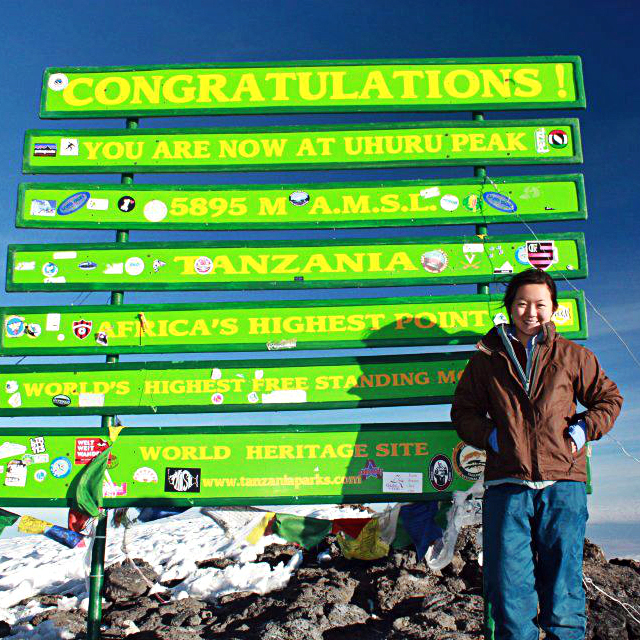 In August 2012, Sarah Wang, M’21, climbed Mount Kilimanjaro (19,341'), while volunteering in rural Tanzania. “Seeing the peak each day on my hour-long walk to the hospital, I could not resist!” she says.
In August 2012, Sarah Wang, M’21, climbed Mount Kilimanjaro (19,341'), while volunteering in rural Tanzania. “Seeing the peak each day on my hour-long walk to the hospital, I could not resist!” she says.
Now completing her general surgery residency at the Cleveland Clinic, Wang remembers the final hike to the summit from the last camp (already at 15,321')—in the middle of the night and running on little sleep. She and her friends carried Kilimanjaro-brand beers in their packs.
“We cracked open our cold beers while sitting at the summit, overlooking the clouds. It is a memory I will not forget,” she says. “The beers, of course, all exploded because of the altitude.”
This story was published in the fall 2022 issue of 12th & Marshall. You can find the current and past issues online.
Who else has made a mountain trek? Let us know at MedAlum@vcu.edu and your adventure might make a great addition to an upcoming alumni magazine or on the medical school’s social media.
